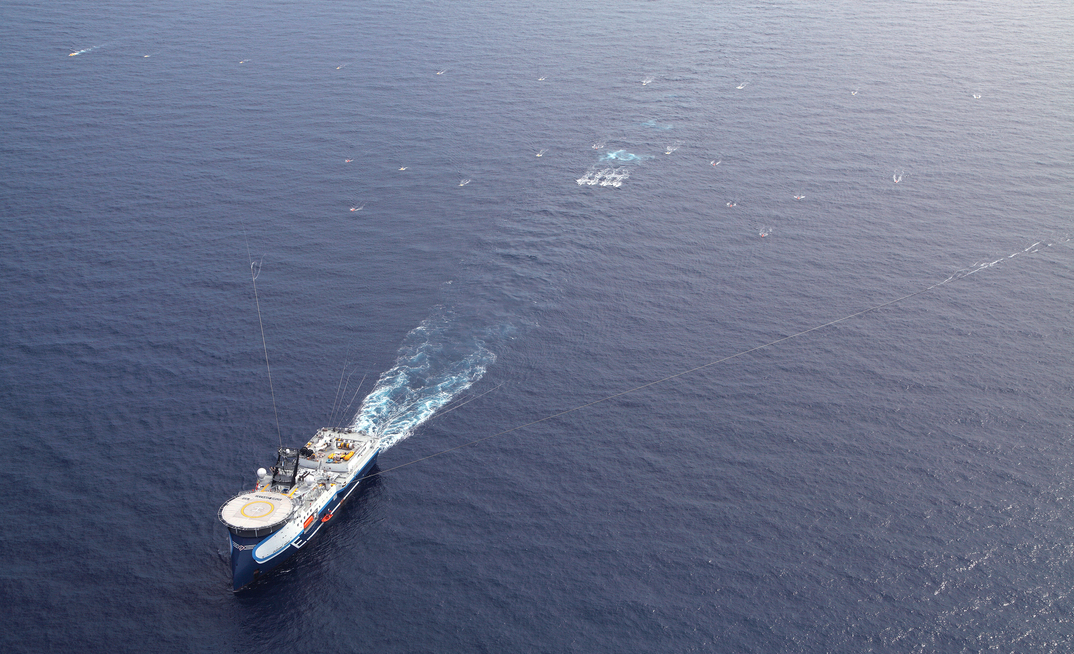Increasingly in Australia's mainstream media there are reports referring to seismic surveys as ‘seismic blasting' which represents a communications strategy by anti-fossil fuels groups to mislead the general public and provoke more ire against the oil and gas sector. It's a scaremongering tactic, which omits the known facts about seismic surveys, that are a well-understood technology.
The term ‘seismic blasting' has again reared its head with the Greens party calling for a new ban on offshore oil and gas projects in Victoria, with the party portraying proven seismic survey technologies as ‘blasting' and dangerous for the natural environment, as Energy News Bulletin reported Thursday.
Energy News Bulletin got in touch with EnerGeo Alliance, the global trade alliance for the energy geoscience industry, to form a better understanding of the technology behind seismic surveys.
The following are comments provided by Dustin van Liew, Vice President, Global Policy & Government Affairs, at EnerGeo Alliance. Founded in 1971, the EnerGeo Alliance is the global trade alliance for the energy geoscience industry, the intersection where earth science and energy meet. It represents the geoscience companies, innovators, and energy developers that use earth science to discover, develop, and deliver energy to the world.
YOU MIGHT ALSO LIKE
Here is what Liew told ENB:
• Seismic surveys are conducted using low-frequency sound waves to map the seabed. This technology is similar to ultrasound technology in that it uses sound to create an image in a non-invasive manner.
• Seismic surveys create low-frequency sound pulses from compressed air released into the water. The sound reflects off the rock layers, building an image of the underlying geological layers. Hydrophones spaced out along a series of cables detect and record the returning sound waves, which are then turned into maps, which help us safely determine the location of potential energy supplies.
• Seismic surveys are essential to discovering and developing all forms of energy, not only oil, as they are currently the only safe and effective way to map the subsurface. Seismic surveys will be essential for the energy evolution, supporting, among others, the development of wind and geothermal sources and CCUS.
• Despite extensive speculation about possible adverse impacts from seismic surveys, no scientific data supports these claims. Seismic surveys are generally considered not harmful or damaging to the marine environment. They are comparable in intensity to many naturally occurring ocean sound sources, temporary and transitory in scope, and the majority of the energy produced occurs at frequencies below the hearing range of many marine mammal species.
• The seismic industry has a long and strong track record of operating safely, sustainably, and successfully in Australian waters. Over 2,000 seismic surveys have been conducted in Australian waters since the 1960s (including 100s of surveys along the off the southern coast of Australia, along the Bass Strait and around Tasmania) with no evidence of the impacts many opponents have claimed as likely.
• The seismic surveying is subject to robust regulation and only performs activity after extensive consultation with local communities and stakeholders and environmental review.
• The energy geoscience industry, including the companies conducting seismic surveys, implements mitigation measures to protect the marine environment during surveys based on the best available science, including professional marine mammal observers and acoustic monitoring technology.
• It also respects exclusion zones and events of biological significance out of an abundance of precaution for protecting marine life.























